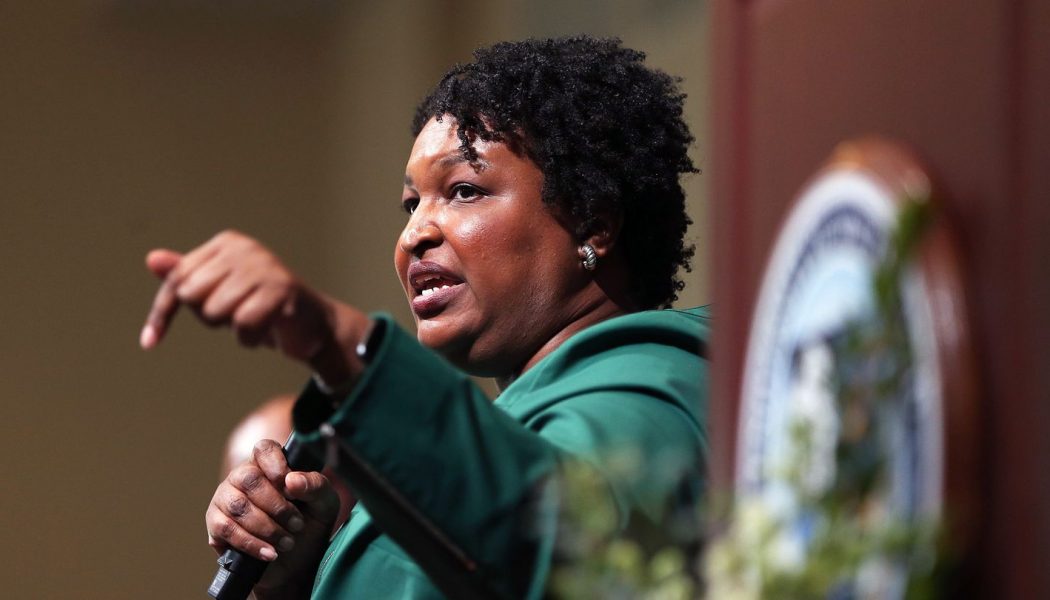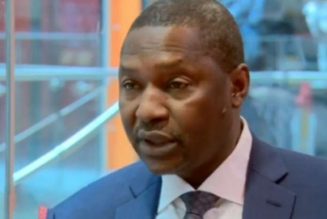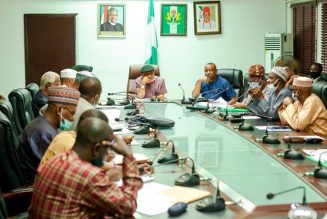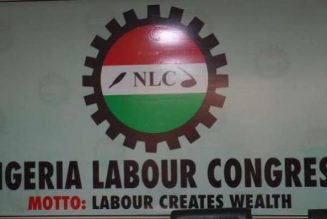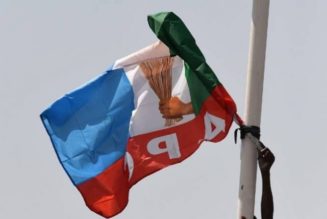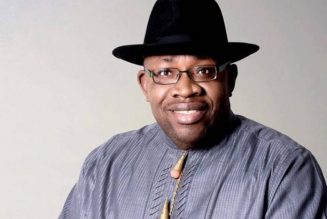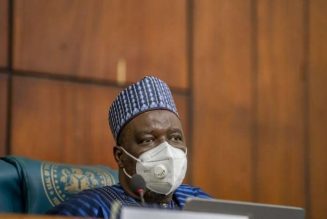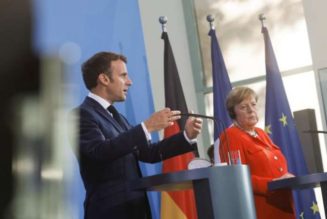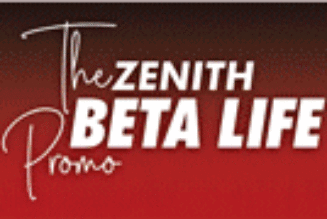
“Voting is not an event. It is a process.” So says former Georgia gubernatorial candidate Stacey Abrams in our conversation following the select-theater release of All In: The Fight for Democracy. In the film and in our conversation, the former state rep makes the case that that process involves voting in midterm elections, engaging in local politics by attending community forums, and supporting advocacy groups like the one Abrams founded, Fair Fight, which calls for free and fair elections and more resources to educate voters.
The distinction between voting as a “process” as opposed to an “event” is an important one, Abrams says, arguing that while a historic number of voters flocked to the polls for Election Day 2008, their lack of participation in the midterm election two years later cost former president Barack Obama the congressional majority he needed to execute his first-term agenda.
Remaining engaged in the process may be challenging for some young voters disillusioned by the results of the 2016 election and jaded by the tedious, painstakingly slow nature of American politics. That perspective is ever present in “My Vote Don’t Count,” a viral video name-checked by Abrams (and no, we never thought we’d get solid hip-hop recommendations from a politician, but 2020 has been nothing if unpredictable) where up-and-coming artist YelloPain raps: “I don’t think I ever had a president make my life better / Did it all on my own, ain’t no politician ever do a nice gesture / … Tell me, how is she gonna help the city? What am I supposed to do? Write letters?”
Abrams has at least three answers in mind for that question: One, make a plan to vote and make sure you know that you’re registered. Two, young people can sign up to be election workers. And, as she told MTV News, “Number three, we need folks to sign up to be volunteers, to defend the right to vote around the country.”
MTV News: What was the vision behind putting this film together? Why did you do it and why now?
Stacey Abrams: In the wake of the 2018 election, I had some time on my hands and, of course, as folks know, I really wanted to focus America’s attention on voter suppression, not just what happened in my election and to the voters in my state, but what was happening around the country. A few months later, I was having a conversation with a young staffer who made a comment about how using the phrase “poll tax” didn’t make a lot of sense to her. Shouldn’t there be a better way to describe it? And it occurred to me that she literally, despite being very steeped in voter suppression and the work that we were doing, she didn’t have the historical context for why a poll tax really is a cost for being able to cast your vote, whether it was in the 1960s, an actual tax you paid, or in 2020, what’s happening in Florida to those returning citizens, or the folks who were standing in eight hour lines in Georgia. When you have to pay to be able to vote, that’s a tax. And so, the notion of All In: The Fight for Democracy began with wanting to tell the story of the history of voter suppression, and connect it to the present of voter suppression. And luckily, I was able to work with extraordinary directors, Liz Garbus and Lisa Cortez.
MTV News: What I loved about the documentary was that it showed how subversive in the city some of these tactics are: Oh yes, you should bring an ID to vote, but then when you really dig into it, you find out all how it’s used to block out certain segments of the population. What can we learn about voter suppression tactics back in the day and how they inform what’s happening right at this moment?
Abrams: We have to remember that voter suppression has been a part of our story from the beginning of our country because it’s a fight for power. Who has the right and the power to shape our future? And, you know, it began at the very beginning with only white men who own land being allowed to vote. We saw small bits of progress with reconstruction in the 15th Amendment, allowing black men to vote. The 19th Amendment that let white women vote and the Voting Rights Act, which for the first time, really expanded the right to vote, to include everyone. But all along the way, there have been rules that have been put in place that, whether blatant or subtle, have been designed to block you from participation and where we stand today, we’re just watching new iterations of those rules.
Voter suppression has three things: Can you register and stay on the rolls? Can you cast your ballot? And does your ballot get counted? And so, to your point about voter ID, voter ID is one of the ways they stopped you from casting your ballot, especially if you’re young. In Texas, and Wisconsin, and Georgia, you can’t use your student ID as a way to vote. You spend thousands of dollars in those states, you pay your taxes, you put in your money, but they won’t let you use your one form of ID. We know in Florida, they tried to pass a law that said you can’t vote in your polling place, on your campus. And so, we know that part of the challenge is that young people are seen as a threat to power and therefore, they are doing what they’ve always done, which is find ways to block you from being heard. We also know young people are five times more likely, in some states, of having their absentee ballots rejected. The goal is to say, don’t bother trying to vote that way. Our response has to be, we’re going to vote that way, we’re just going to make sure we track it and make sure it works.
Part of the way we connect and juxtapose the former existence of voter suppression with the current iteration is we’ve got more knowledge, we’ve got more technology, and we know what’s happening, and we are willing to fight back because 21st-century voter suppression may look different. It may be, as you said, more insidious and more subtle, but it’s just as deadly, and that’s why we can’t let it stand.
MTV News: You say in the documentary, “The fundamental power of democracy lies in the right to vote and if you protect that right, you create possibilities for everything else.” Let us know what some of those possibilities are and why young people shouldn’t be disillusioned about exercising that right.
Abrams: Voting is hard and it’s not a magic solution. It doesn’t solve problems. We don’t elect saviors. We can elect people we really like, and we really trust, but we’ve got to remember, it’s part of a system, and this is a process. Voting is not an event. It is a process, and the extent to which we treat it as an event, then people are not wrong when they say, “The event didn’t work.” But if you think about it like a process, like learning to play a sport or play an instrument, it takes time. You’ve got to do repetition and you’ve got to stay on top of it, and if you miss a few weeks, you fall back and you’ve got to get back to where you were.
For many of the issues that matter, if you care about climate change, criminal justice reform, if you care about reproductive health, if you care about health care at all, you’ve got to start at the bottom. The president doesn’t solve America. Many of the challenges and many of the issues [where] we want to see change happen at the school-board level, the city-council level, your county commissioner, your state legislature, your DAs and your judges, and so, we have to connect the dots. So one, no, it’s not instantaneous, two, connect the dots, and then three, tell the truth.
MTV News: You’ve got municipalities thinking about police abolition, or defunding the police, and how that all bubbles up into a national strategy. What is it that young people can do after the election to make sure they remain engaged in local politics?
Abrams: It’s a three-part process: Protest in the streets, protest at the polls, and then protest through your participation. And your participation means showing up at those committee meetings. … When I was in college, I used to go to zoning meetings, which are probably the boring meetings you can attend as a 17- and 18-year-old, because they were putting liquor stores in my community. I lived on Spelman [College’]s campus, which was lovely, but when I walked out of that gate, it was easier to buy malt liquor than it was to buy an apple. Zoning committees are where they make those choices and the reality was wealthy people showed up and said, “Keep this out of my neighborhood.” Poor people, people of color, did not show up, and so, often, all the worst things showed up in their neighborhoods. Young people, you’ve got the technological ability, not only to get there, but then to tell everyone you know about what’s happening. And that’s what’s different. The secret is, and you know this, if you get 10 people to show up, you’ve now overwhelmed the meeting.
MTV News: It’s clear how you were able to galvanize so many voters down there in Georgia during your run, and unfortunately, you met that opposition because Brian Kemp was Secretary of State, as he was running for governor. In your concession speech, you spoke truth to power about how these conflicts of interest disrupt the very essence of American politics. What can we do to address some of these structures that sometimes make these problems feel so big for people?
Abrams: There’s this proverb that says, “How do you eat an elephant? One bite at a time.” And that’s what we’ve got to do. Part of the way suppression and just power mongering works is it overwhelms you with the scope and scale that you think you can’t do anything about it. I began by figuring out where can I stand and what can I touch? When I was 17, when I was 18, I wanted to change the world. I set up a table at Manley Plaza at Spelman College to register students to vote. When I was 35, I became Democratic Leader of the House of Representatives, but I also started an organization to register 86,000 people to vote. And when I ran for governor at the age of [humorous mumble], in 2018, that was 43, when I didn’t become governor, I set up three organizations: Fair Fight, to fight against voter suppression; Fair Count, to ensure we have an accurate census; and the Southern Economic Advancement Project, to translate progressive policy into [the South].
And so I say that to say, if I could only remember where I was when I started, then I only had a table and a form, but that table and that form helped change my community. By the time I was in the state legislature, I was able to affect my state and now, I can affect conversations around our country. We have to remember, especially when you’re young, that yes, these problems seem overwhelming and they seem too big to solve, and the answer is you can’t solve them yourself, but these problems get weaker when we attack them from where we are and when we remember that we’re not in it alone.
MTV News: In your book, you talked about the “new American majority.” Could you break down what that is and how thinking about this idea of a new American majority can make young people, and minorities, and people of color feel empowered?
Abrams: In the book, Our Time Is Now, I try to really anchor us in how much power we have. When this country started, white men who owned land could vote. Black people were considered subhuman. Native Americans weren’t citizens. In fact, they didn’t become citizens until 1924. Women were told to be silent and then the Naturalization Act of 1790, they said the only people who could come to America were white people of good character. If you were Latino, if you were Asian, you were not permitted to come to our country. And so, we’ve got to remember that, from the very beginning, we’ve been fighting against this insistence that we are not enough, but over time, our numbers have grown.
Where we are in 2020 is that we’ve hit this inflection point where, if you are young, if you are a person of color, if you are a white person with progressive leanings, there are enough of us that when we combine our forces, we overwhelm and we outnumber the rest. And that’s what matters. We’ve got to remember in every other battle, we’ve always been fighting from a position of weakness. We have finally hit this demographic number where we can fight from a position of strength. We didn’t have the numbers we have today when Barack Obama got elected in 2008. That was more than a decade ago. Imagine how much stronger we are now, now that we have those numbers, now that we know their playbook.
MTV News: What do you think the significance is of having a Black female candidate for vice president?
Abrams: I think that representation matters, that diversity matters. We need to see change. It’s not enough to have people talk about it. It’s why people don’t trust voting. If they don’t see that there’s some effect and so, we have to make certain that we are not only pushing for the physical representation that we’re going to see on this ticket, we’ve got to push for the actual representation that we see in policies. As excited as we are about the top of the ticket, we’ve got to remember that we also need to elect school board members who believe in our children. We’ve got to elect city council members, who are going to fight for those budgets to actually invest in community. We’ve got to elect judges who don’t believe in just giving you maximum sentences and throwing away the key, and we’ve got to elect DAs who believe that, if you are a first offender, you are capable of being better, and if you are a repeat offender, that redemption should still be a possibility. We’ve got to make certain we don’t get so focused on what we see that we forget what we need to do.
MTV News: What can young people do right now to make sure their vote counts, to double check that they’re registered, and to make sure that they’re up to date on the issues that affect them?
Abrams: One, we need you to make a plan to vote, make sure you know that you’re registered, where you can vote and how you can vote, and you can do that at allinforvoting.com or vote.org. And that website will give you all the information you need because the way voter suppression works best is if they surprise us and we get caught flat-footed. But if we make a plan to vote, they can’t get ahead of us. We vote early, it’s done. We’re good. And once you’ve made your plan to vote, tell everyone you’ve ever met to make a plan to vote, share yours, and ask them to share theirs.
Number two, we need young people to sign up to be election workers, to be those people who sit behind the table and check you in, and make sure your vote counts. Right now, the people who typically do it are over the age of 60, and it’s too dangerous for so many of them to come back, and it’s being used as an excuse to shut down polling places, and make voting harder. So, if young people will sign up for these jobs, you can go to powerthepolls.org and sign up to be a poll worker. They’ll even pay you for it.
And then, number three, we need folks to sign up to be volunteers, to defend the right to vote around the country. My organization, fairfight.com, is the place to go to sign up to be a volunteer. You can volunteer where you live, but we may ask you to help people in states where they don’t have enough support, but we need you to sign up either to be a virtual volunteer and sometimes in person, but no matter who you are, no matter where you are, we need you to help defend the right to vote. Let’s be all in for voting because our time is now.
